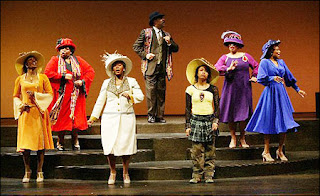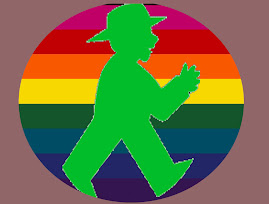
The Ex-Gay Obama story is striking a chord with me. Obama is campaigning through South Carolina with an ex-gay singer with an ex-gay homophobic agenda. Some are of the belief that Obama needs the support of the homophobic black church community. Which leads me to ask...
Who's more homophobic, the white church or the black church?
If homosexuality is a white thing, then it's the black church, right? How much more of a taboo is it to be gay in a black community? As someone who has very little exposure to church, and even less exposure to being black I can only respond to these questions based on the stereotypes the media and entertainment industry has built up. While I realize the following examples are not the basis of an argument, I feel that they help to elucidate a few of the misconceptions that white society may have about the black church community and it's view(s) on homosexuality.
Two reasons the black church may not be as homophobic as the white church:
1. I saw the show CROWNS when I was in my formative teenage years. Combining this magical experience of a loving, supportive accepting black church with everything like it seen on TV and in the movies, it was not difficult to get the impression that black people where some of the most accepting and tolerant people around.
2. Black. Male. AIDS. I can't count how many times I've seen this combination of traits, and they weren't all drug related.
I suppose the point I'm trying to make here is not that black churches should not be/are not homophobic, rather that from a CAMS perspective, there might be some credence to portrayals of black community being not very reliable (gasp, TV/movies are lying!)
The Trujillo article about lesbians in chicano communities brought to my attention for the first time the idea of Homosexuality as a white thing, and therefore is rejected even more violently from non-white communities, such as the Chicano community. It seems that this is a prevalent enough phenomena that it would apply to most non-white cultures and therefore answer the question with: Yes, black churches are more homophobic. Does that still mean Obama needs to cater to them to get the support he needs from the black community, well we'll see how well he holds up on the tour.

